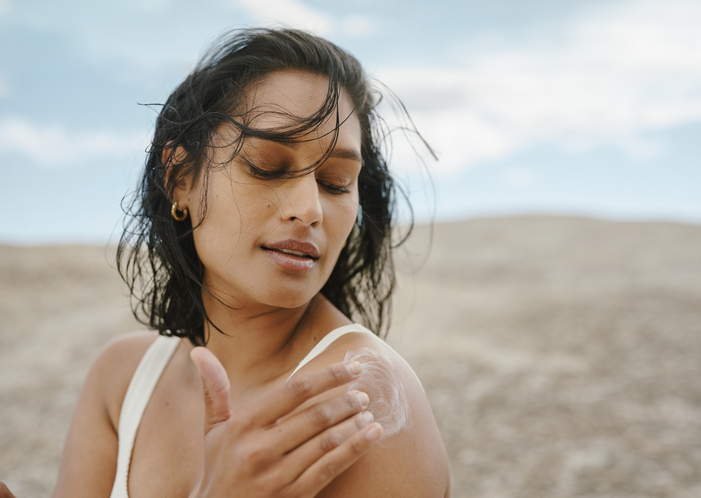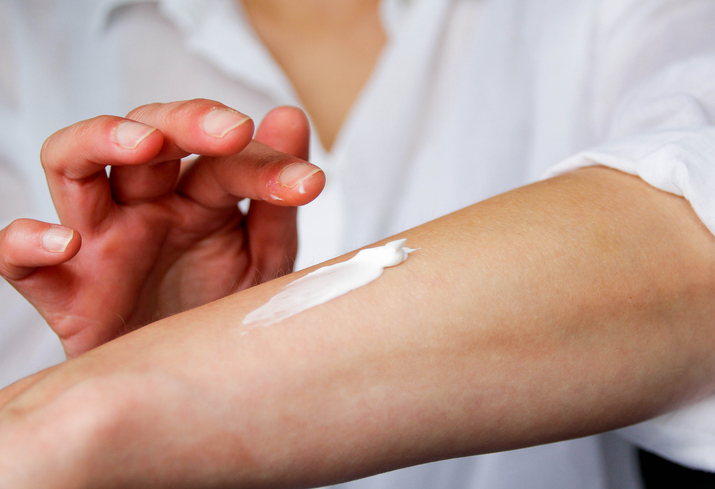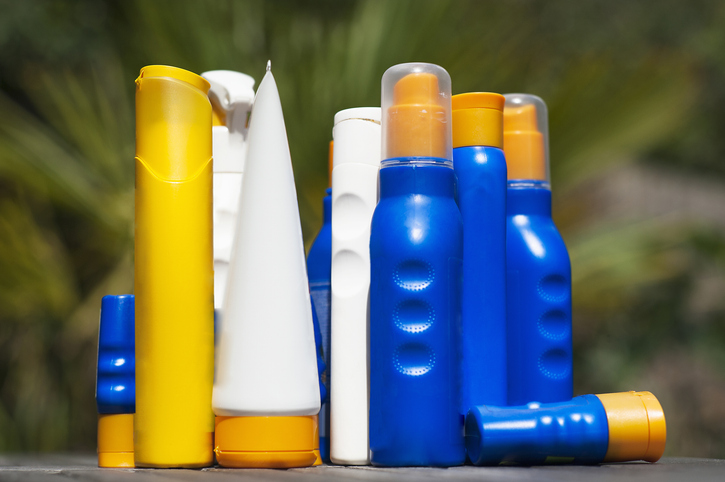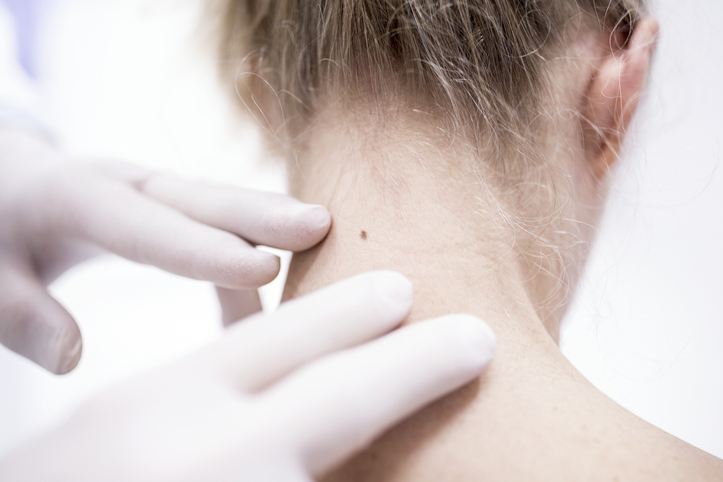WE’RE all well versed in the importance of wearing sunscreen when it comes to protecting our skin.
Now, a surgeon has warned sun safety reaches far beyond just applying SPF – after he revealed the hospital trust he works at carries out well over a thousand skin cancer removals a year.
The warning comes just in time for this week’s amber heat health alert from the UK Health Security Agency (UKHSA).
With temperatures forecast to rise above 30°C across central and southern parts of the country over the next few days, health officials are urging people to stay safe in the hot weather by following its guidance.
As well as following steps to avoid heat exhaustion and heatstroke, it’s important to carry out preventive measures for skin cancer.
Over the last decade, melanoma skin cancer incidence rates have increased by 32 per cent in the UK, according to the National Institute for Health and Care Excellence (NICE).
And according to Cancer Research UK, the number of new cases on average each year is projected to rise by 9 per cent, from around 20,800 cases in 2023-2025 to around 26,500 cases in 2038-2040.
One person that’s experienced this rise first hand is consultant plastic and reconstructive surgeon, Animesh Patel.
With exposure to ultraviolet (UV) rays a major risk factor for melanoma, he’s now stressing the importance of sun safety.
As Cambridge University Hospital Trust’s plastic surgery lead for head and neck cancer reconstruction, he regularly operates on patients who admit to being dedicated sun worshippers now or in the past – as well as those who use artificial UV tanning methods, such as sunbeds.
He tells Sun Health: “Every year, the plastic surgery department carries out well over a thousand operations to remove sun-related skin cancers, and we do not see this number dropping.
“So many of my patients who I treat for skin cancer say they have spent a lot of time in the sun, often in their childhood.
“I have removed skin cancers from patients of all ages, children to pensioners, so please take care whatever your age.”
While it’s mostly fair-skinned people who tend to burn easily who are at greater risk of skin cancer, people of all ethnicities need to take care.
Mr Patel said he removed skin cancers from patients with all skin types, including those with darker skin.
Adults and children do need some exposure to sunlight, particularly when it comes to vitamin D production – with vitamin D supplements advisable for under-fives.
But Mr Patel says parents need to be vigilant over children’s skin – especially babies‘ skin – which is much more sensitive than adults’.
Damage caused by repeated exposure to sunlight can lead to skin cancer in later life.
But you shouldn’t rely on sunscreen alone, warned Mr Patel.
He says: “Wear suitable clothing, a sun hat with a broad brim to protect the face and ears and spend time in the shade where the sun is at its hottest in the middle of the day.
“Don’t forget the sunglasses, especially if swimming, and remember to drink plenty of water to stay well hydrated.”
The biggest sun mistakes…
OUR team of experts shared some more of the biggest sun mistakes people make – particularly when it comes to SPF.
1. Only wearing SPF on sunny or hot days
ONE of the most common mistakes people make is only wearing SPF on sunny or hot days, Dr Ross Perry, medical director of Cosmedics skin clinics, tells Sun Health.
He explains: “UV rays can penetrate clouds and still cause damage even when it’s overcast or cool, which is why SPF should be worn year-round.”
2. Not wearing enough SPF
ANOTHER big mistake is not wearing enough sunscreen.
Dr Perry says: “Most people use far less than the recommended amount.
“For full body coverage, you need around a shot glass-sized amount, and it should be reapplied every two hours, especially after swimming, playing sport, or towel drying.
“People also tend to miss key areas like the scalp, ears, eyelids, neck, and tops of the feet, which are just as vulnerable to sun damage.”
3. Applying SPF too late
APPLYING SPF too late, such as once already outdoors, is another issue, said Dr Perry.
He recommends: “It should be applied at least 15–20 minutes before sun exposure to allow it to absorb properly.”
4. Not wearing SPF because of cancer fears
IN some cases, people choose not to wear SPF as they believe it causes cancer – a myth that’s spread by misinformation on social media.
But this isn’t true, said Dr Tim Woodman, medical director for Cancer Services, Bupa UK Insurance.
He tells Sun Health: “SPF protects you from cancer, and there’s no good evidence that shows wearing SPF causes cancer.
“If you’re concerned about ingredients in regular chemical sun creams, try a mineral-based sun cream.
“These cost a bit more and take longer to rub into your skin, but
generally contain fewer ingredients than chemical SPFs.”
5. Relying on SPF that’s in makeup
SOME products, like foundation and tinted moisturisers include SPF to help protect you from sun damage.
However, relying on these along isn’t enough to keep your
skin protected from sun damage.
Dr Woodman warned: “The amount of SPF in these products is too little to provide adequate protection.”
What you must remember when it comes to SPF…
WHEN buying SPF, Dr Woodman said it’s important to look out for a number of things – firstly, SPF that’s too low for your skin type.
He explains: “Wearing an SPF with a factor less than 30 rarely provides enough protection if you’re out in the sun.
“It’s all about knowing your natural burning time, and using the factor number to calculate how long you need to protect yourself for.
For example, if your skin usually burns after spending 10 minutes in direct sunlight, SPF 15 would multiply your natural burn time by 15.
“This would mean that your skin may be protected for up to 150 minutes. However, your protection level relies on sun cream being applied correctly, and assuming that you don’t rub or sweat any of it
off during that time in the sun.
“It’s better to wear an SPF with a higher factor, such as 50 or 100, especially if you’re at greater risk of burning (for example, you have fairer coloured eyes, skin, hair or freckles), as this will help protect your skin for longer.”
You should also be sure to make sure not to wear a poor quality SPF.
Dr Woodman adds: “Along with choosing an SPF with a factor of at least 30, make sure you’re reading the label to check the product’s rating and spectrum coverage.
“Choose an SPF with broad spectrum coverage – this means it’ll protect you from both UVA and UVB light; both of these types of light can damage your skin.
“Ideally, choose an SPF that has a UVA rating of at least four stars (ideally 5).
“Check your label to make sure that the SPF hasn’t expired, especially if you’ve had it for a while.
“And always store your SPF in a secure, cool and dark place.”
Kimberley Medd, clinic lead at Face The Future, notes that if your moisturiser does have SPF, people often don’t apply enough to get full protection.
She advises: “Moisturisers with SPF are more often than not broad-spectrum, so they don’t cover both UVA and UVB effectively.
“If your sunscreen is SPF 30 and you add a moisturiser with SPF on top (let’s say SPF 15), it doesn’t necessarily give you SPF 45. The protection doesn’t stack this way.
“It can lower the overall protection because of how the ingredients interact.
“Moisturisers with SPF often provide a lower level of protection than regular sunscreens.
“Many moisturisers only offer SPF 15-30, which might not be enough for prolonged sun exposure.”
Consultant dermatologist, Dr Derrick Phillips, has some go-to SPF recommendations.
They include: Anthelios UV MUNE 400 Invisible Fluid SPF50, Eucerin Sun Oil Control Dry Touch Facial Sunscreen and Heliocare 360 Water Gel SPF50.
And always check your moles…
AS we spend more time outdoors this summer, and have more exposure to the sun, it’s important to regularly monitor skin for any changes, particularly moles.
“It’s important to get to know your skin and to look out for changes,” says Dr Woodman.
“If you notice new skin lesions appear, or if a mole has changed in shape, size or colour, or starts to itch, bleed or look uneven, it’s important to get it checked by a registered dermatologist as these can be early signs of skin cancer.
“The quicker you get it checked, the better. If you’re concerned about a skin issue, there are services available that can help you get fast access to expert care.
“For example, Bupa offers a remote skin assessment service which allows dermatologists to review images of skin concerns without needing a GP referral in most cases.”
Clare O’Connor, suncare scientific advisor at Boots, adds: “A Mole Scanning Service, which is operated by ScreenCancer, is available in selected Boots stores and provides an accessible way of checking anything you may be concerned about.”
What is melanoma, what are the symptoms and how can you prevent it?
Melanoma is the most serious type of skin cancer that has a tendency to spread around the body.
It is diagnosed 16,000 times per year, and tragically takes the lives of 2,340 people per year.
The number of people being diagnosed with melanoma is increasing, and it is the 5th most common cancer in the UK.
But it is also one of the most preventable cancers, with 86 per cent of cases in the UK avoidable.
The best way to protect yourself from melanoma is to be sun safe – wear SPF every day, wear a hat and sunglasses and keep out of the sun in the hottest hours. It is also advised to avoid sunbeds.
People who are fair-skinned, have blue or green eyes, blonde or red hair and a large number of freckles or moles are more likely to get skin cancer.
Surgery is the main treatment for melanoma, particularly if it is found early. This will involve removing the affected tissue in the skin.
Radiotherapy, medicines and chemotherapy are also sometimes used to try and stop the cancer from growing. Treatment depends on the severity of the disease.
What are the symptoms?
The key thing to look out for are changes to an existing mole, or a new mole on your skin.
Most experts recommend using the simple “ABCDE” rule to look for symptoms of melanoma skin cancer, which can appear anywhere on the body.
There are five letters/words to remember:
- Asymmetrical – melanomas usually have two very different halves and are an irregular shape
- Border – melanomas usually have a notched or ragged border
- Colours – melanomas will usually be a mix of two or more colours
- Diameter – most melanomas are usually larger than 6mm in diameter
- Enlargement or elevation – a mole that changes size over time is more likely to be a melanoma
A mole that changes size, shape or colour may be a melanoma.
But other signs to look out for include moles that are:
- Swollen and sore
- Bleeding
- Itchy
- Crusty
How deadly is it?
Melanoma is a deadly form of skin cancer.
The outlook of a person’s disease depends on the stage of the cancer when it was diagnosed.
Survival is better for women than it is for men.
“We don’t know exactly why this is. It may be because women are more likely to see a doctor about their melanoma at an earlier stage,” says Cancer Research UK.
The charity says that generally, statistics show that in England, more than 85 out of every 100 people (more than 85 per cent) will survive their melanoma for 10 years or more after they are diagnosed.
- Around 100 per cent in England diagnosed with melanoma at stage 1 – when the cancer cells are only in the top layer of skin – will survive for five years or more after diagnosis.This drops to 80 per cent for stage 2.
- Some 70 per cent live for a further five years when they are diagnosed in stage 3, which is when the cancer has started to spread to nearby lymph nodes.
- At stage 4, when the melanoma has spread elsewhere in the body, almost 30 per cent survive their cancer for 5 years or more.
Cancer Research says the stage 4 data does not account for age differences. Age can affect outlook and younger people have a better prognosis than older people.
Age can affect outlook and younger people have a better prognosis than older people.
What is melanoma?
Melanocytes are cells in the skin that give us the colour of our skin because they produce a pigment, known as melanin.
When you sit in the sun, melanocytes produce more pigment (a sun tan), which spreads to other skin cells to protect them from the sun’s rays.
But melanocytes are also where cancer starts.
Too much UV causes sunburn, and this is a sign of damage to the skin’s DNA.
The UV triggers changes in the melanocytes, which makes the genetic material become faulty and cause abnormal cell growth.
People who burn easily are more at risk of skin cancer because their cells do not produce as much pigment to protect their skin.
Those with albinism are at the most risk because their skin produces no pigment at all.
















